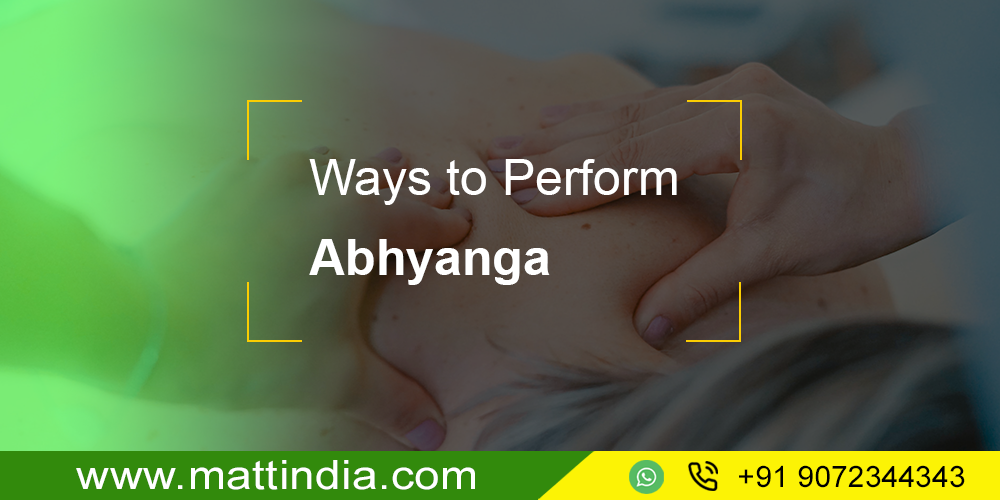Abhyanga serves as the Ayurvedic art of massage with the practice of healing oils. There are loads of benefits using the regular abhyanga therapy, either you perform yourself at home or seek the help of an Ayurvedic practitioner.
The essential benefits of Abhyanga
- Enhances the better sleep quality and promotes the overall well-being of health.
- It improves the blood circulation, enhances vision, strength and stamina.
- This increases moisture for providing softer skin.
- It improves the tone, texture and overall skin appearance.
- This strengthens the tissues of the body, lubricates the internal organs, joints and bones.
The self-message usually does not take a time-consuming process. The self- abhyanga or regular oil massage, opts to be in conjunction with at least one monthly synchronized abhyanga therapy done with qualified Panchakarma technicians, that is highly recommendable.
Each morning you can prep your skin with a dry brush and perform the self-abhyanga at home for receiving the oil’s hydrating nourishment.
Choosing your oil
Oils are chosen based on the individual constitution, imbalances and the influences of the season. India has the traditional system of using coconut oil or sesame oil for thousands of years for every day’s self abhyanga.
The coconut oil cools the body’s system and serves the best for summer, late spring and the early fall days. This is highly beneficial for individuals with excess body heat.
The sesame oil warms the body’s system that is best for the winter, late fall and the early spring days. This is good for individuals who exhibit excess cold in the system.
The traditional Ayurvedic oil infuses healing herbs with the oil for additional benefits. The blend of herbs in the oil addresses specific imbalances or benefits a particular Ayurvedic constitution. You can even contact the Apothecary to choose the perfect oils as per your requirements.
The essential steps to perform self-abhyanga
- You have to brush your skin with a dry brush for removing the dirt, dead skin and debris from its surface also prepares the skin’s pores to absorb the oil.
- You can warm your oil in a pot or even rub the oil between your palms, if you are short of time.
- With firm and gentle strokes, you can massage your body starting from the neck and working down to your feet. You have to use short strokes for your joints and long strokes for the limbs. Also, massage your fingers and toes and pay extra attention to the soles of your feet. They contain important marma points and all the nerve endings with the conjunctions of prana called as life force energy.
- Let the oil absorb for 5 to 10 minutes. The deeper benefits of abhyanga depends on the body’s absorption of the oil and herbs. It takes some time for the oil to penetrate to the deepest layers of the skin. And some more time for penetrating to the tissues of the internal body. You can practise some deep breathing or prepare a tea at this time.
- You have to rinse the excess oil with a cold shower on warm days or a cool shower on cool days. Removal of oil is important or the excess oil will clog the pores.
The frequency of self-abhyanga can be practised daily or 2 to 3 times a week to receive amazing benefits from it.
Tags: Ayurveda Treatment for Panchakarma, Ayurveda Treatment for Rejuvenation, Ayurveda Treatment for Post Delivery Care, Ayurveda Treatment for Infertility








